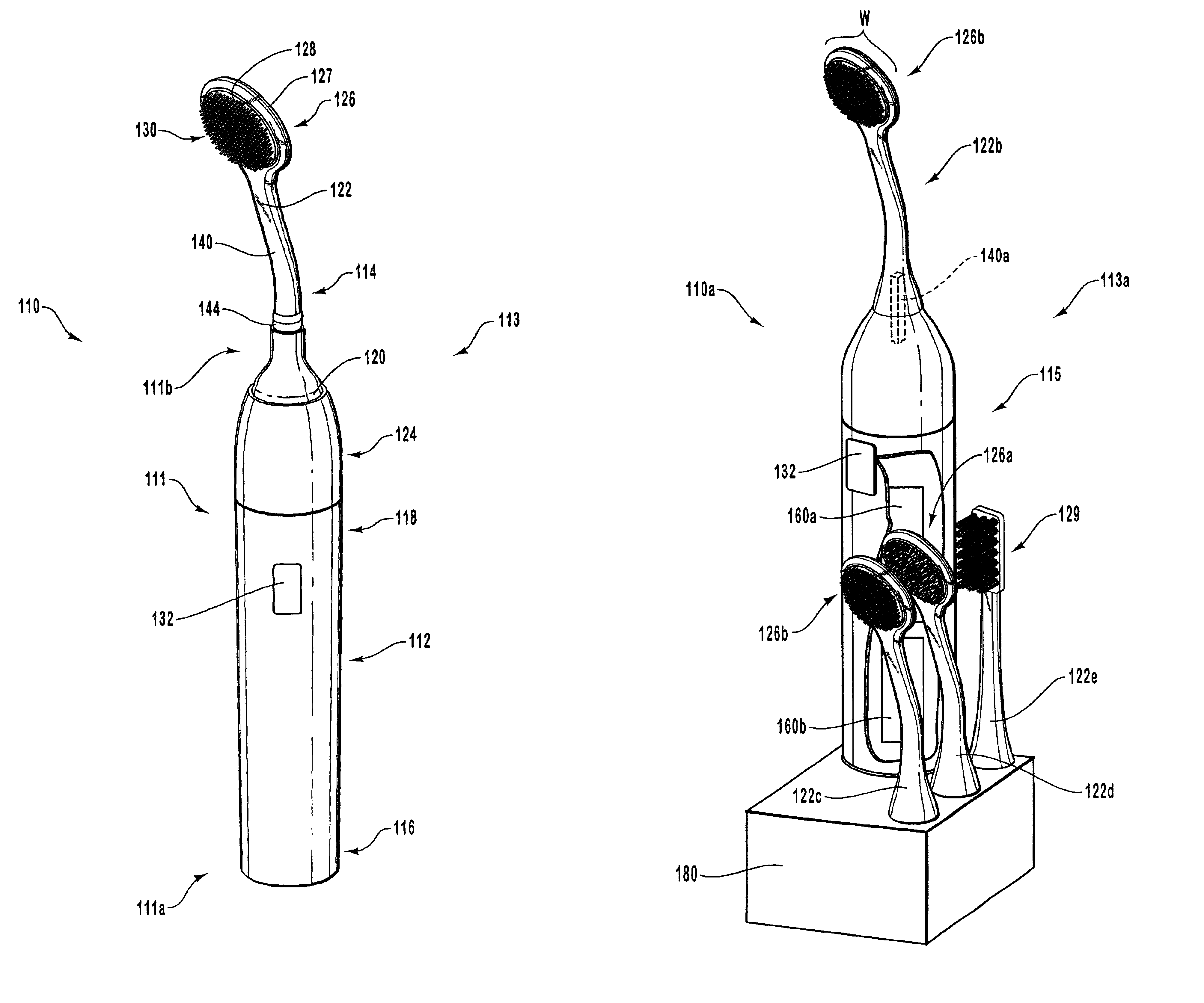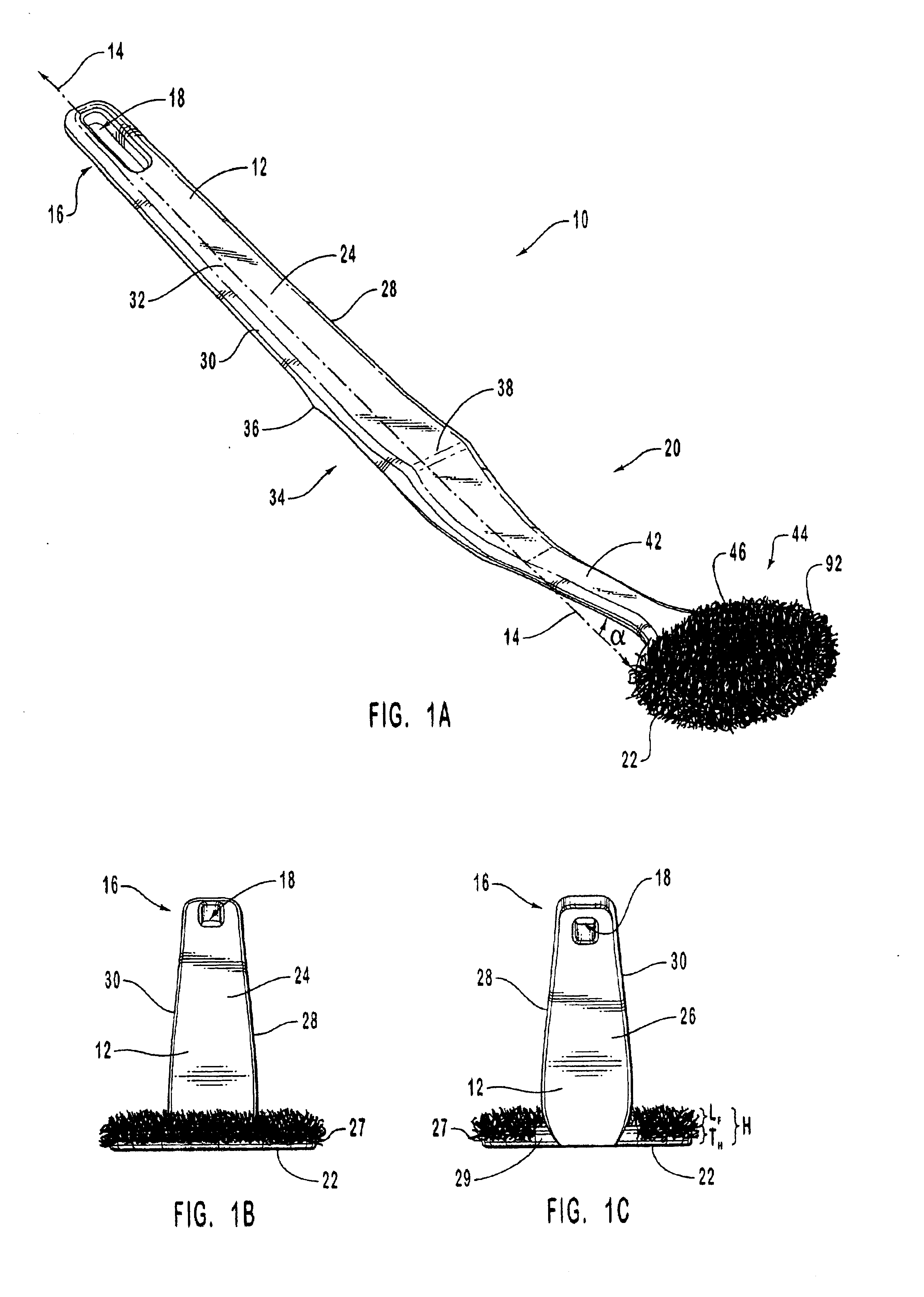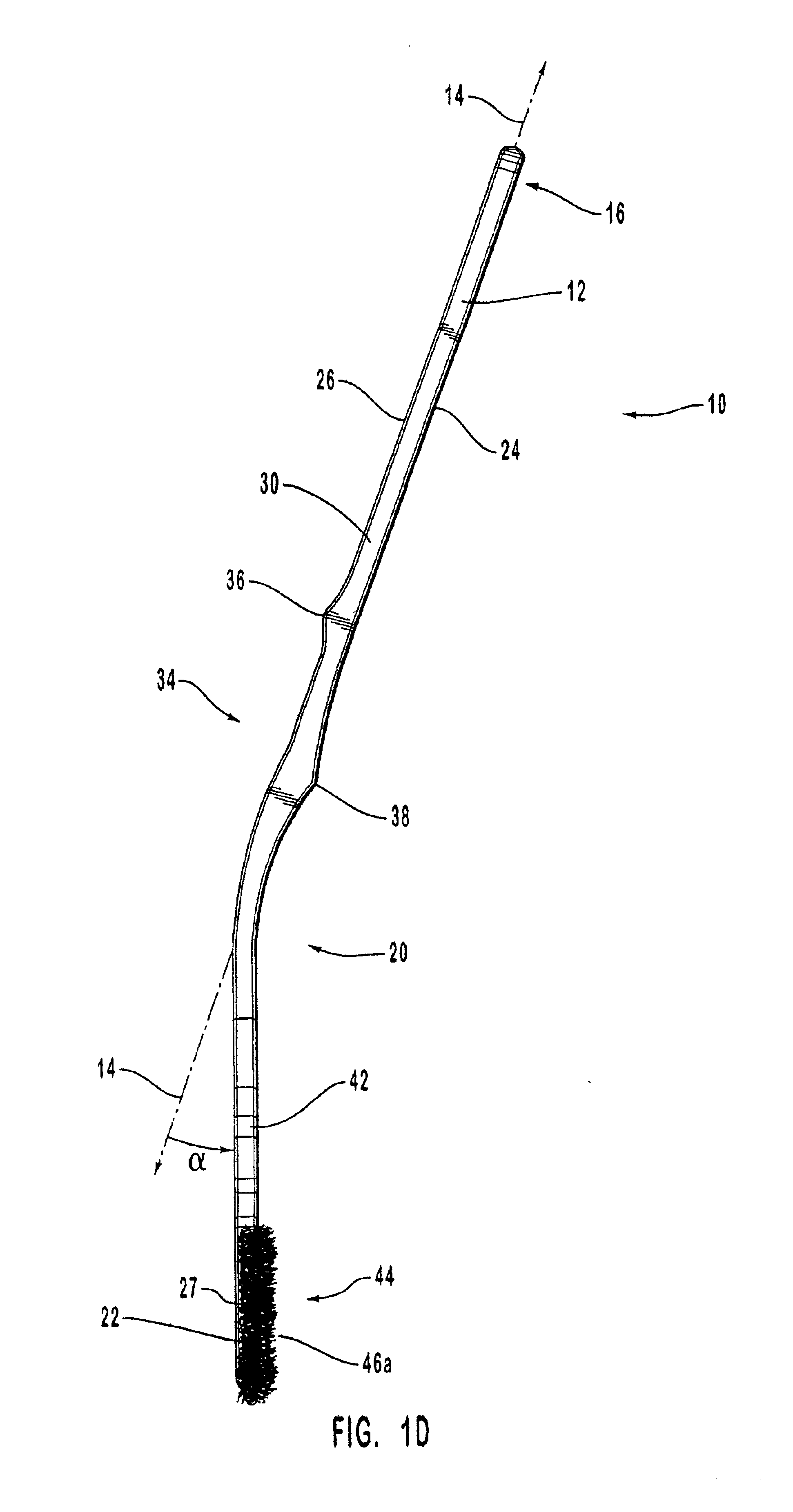Powered tongue cleaning device
a tongue cleaning and power technology, applied in carpet cleaners, packaging goods, packaging foodstuffs, etc., can solve the problems of frequent neglect of tongue cleaning, difficult cleaning of tongues, etc., and achieve the effect of convenient and effective tongue cleaning
- Summary
- Abstract
- Description
- Claims
- Application Information
AI Technical Summary
Benefits of technology
Problems solved by technology
Method used
Image
Examples
Embodiment Construction
[0058]The present invention is generally directed towards a tongue cleaning device that provides convenient and effective cleansing of the tongue. The principles of the present invention, however, are not limited to tongue cleaning devices. It will be understood that, in light of the present disclosure, the tongue cleaning device disclosed herein can be successfully used in connection with other types of oral hygiene devices.
[0059]Additionally, to assist in the description of the tongue cleaning device, words such as top, bottom, front, rear, right and left are used to describe the accompanying figures. It will be appreciated, however, that the present invention can be used in a variety of desired positions—including various angles, sideways and even upside down.
[0060]A detailed description of the tongue cleaning device now follows. Note that, the main components of the tongue cleaning device including the handle 12 and the head 22 are described and then the unique features of the b...
PUM
 Login to View More
Login to View More Abstract
Description
Claims
Application Information
 Login to View More
Login to View More - R&D
- Intellectual Property
- Life Sciences
- Materials
- Tech Scout
- Unparalleled Data Quality
- Higher Quality Content
- 60% Fewer Hallucinations
Browse by: Latest US Patents, China's latest patents, Technical Efficacy Thesaurus, Application Domain, Technology Topic, Popular Technical Reports.
© 2025 PatSnap. All rights reserved.Legal|Privacy policy|Modern Slavery Act Transparency Statement|Sitemap|About US| Contact US: help@patsnap.com



